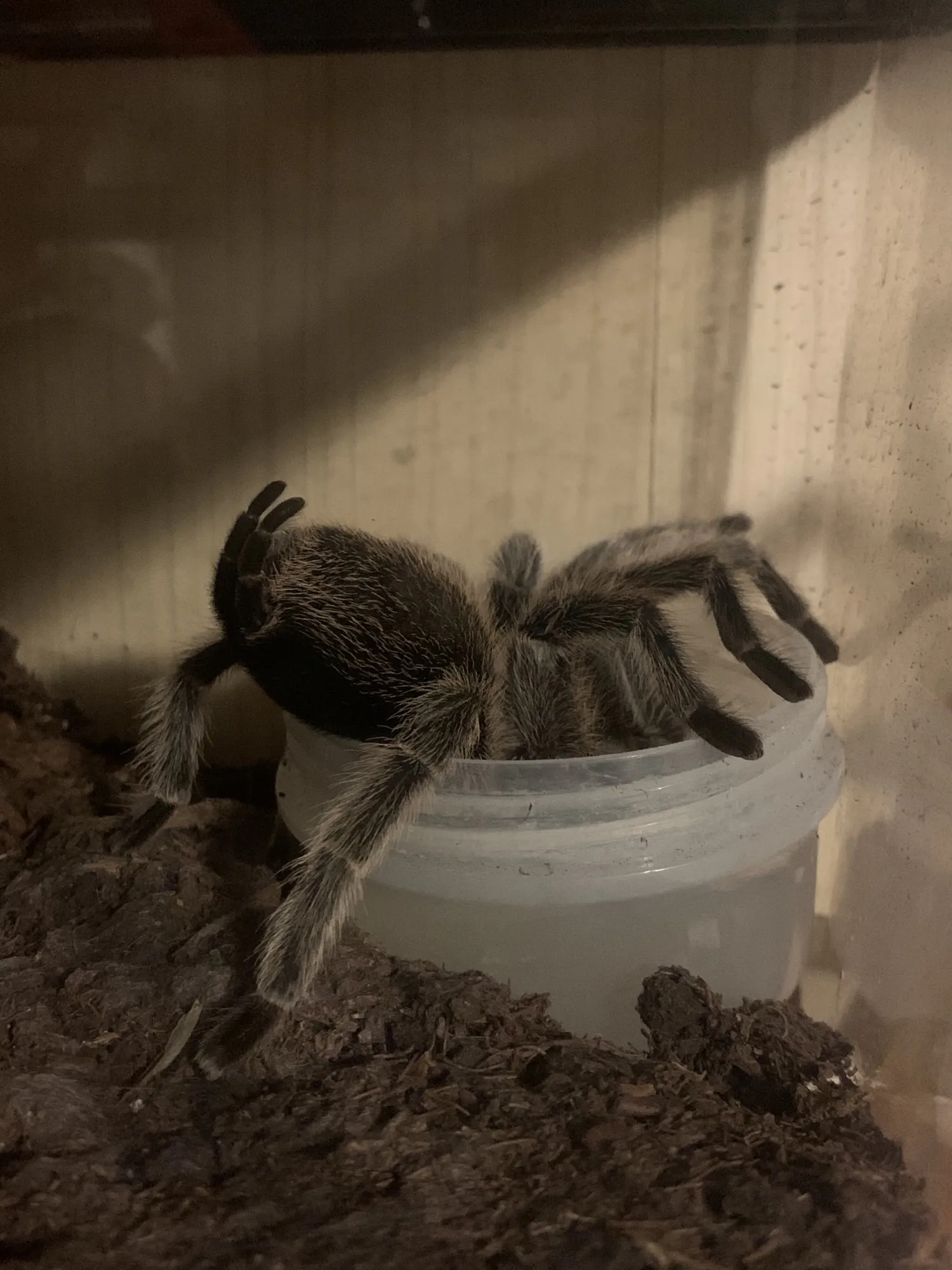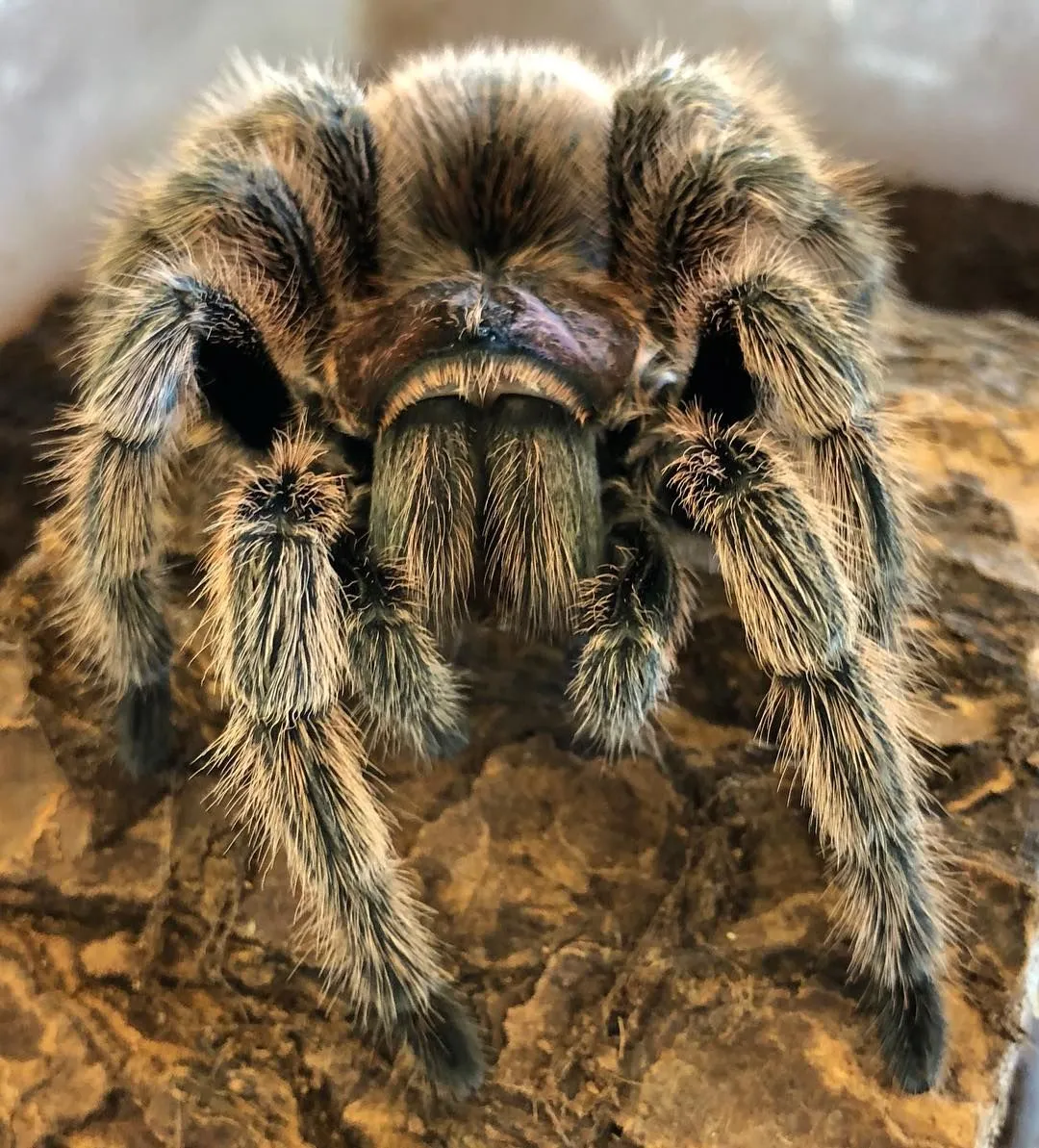Rose Hair Tarantula Size [Top 5 Facts]
The Rose Hair Tarantula (Grammostola rosea), a popular choice among tarantula enthusiasts, is admired not only for its docile temperament and beautiful appearance but also for its manageable size. Knowing the size of your Rose Hair Tarantula is essential for providing proper care, including housing and feeding. This guide provides you with the top 5 facts about the size of a Rose Hair Tarantula, helping you understand everything from average size ranges to the factors that influence their growth. Whether you’re a new owner or a seasoned keeper, understanding these facts will enhance your ability to care for these fascinating creatures. Discover the secrets of their growth and how to ensure your Rose Hair Tarantula thrives. Learn more about this amazing species and how to keep them healthy and safe.
Fact 1 Size Range of Rose Hair Tarantulas
Rose Hair Tarantulas typically reach a leg span of 4 to 6 inches (10 to 15 cm) when fully grown. This measurement is taken from the tip of one leg, across the body, to the tip of the opposite leg. Although the size can vary, this range is a general guideline for adult Rose Hair Tarantulas. It’s important to remember that individual tarantulas may grow slightly larger or smaller depending on various factors. Knowing this size range can help with enclosure planning and ensuring the tarantula has enough space to move around comfortably. This size makes them suitable pets for those new to tarantula ownership, as they are not overly large and intimidating. It is crucial to provide an enclosure size that aligns with this range. The average size helps to determine the ideal habitat for your spider pet.
Understanding the Size Differences Between Males and Females

Sexually mature female Rose Hair Tarantulas tend to be larger than males. Females can often reach the higher end of the size range, sometimes even exceeding 6 inches in leg span. Males, on the other hand, are generally smaller and often have longer legs relative to their body size. The difference in size becomes more apparent as the tarantulas mature. Determining the sex of a juvenile tarantula can be challenging, but as they molt, it becomes easier to identify sex. During mating, the female’s larger size can provide a strategic advantage. This size difference contributes to the overall growth of the species and creates visual distinction between sexes. Understanding these differences will help you better care for your pet. A female will live longer than a male and thus grow bigger.
Fact 2 Factors Influencing Rose Hair Tarantula Size
Several factors can influence the ultimate size of a Rose Hair Tarantula. Genetics play a significant role; some tarantulas are simply predisposed to grow larger than others. Other important factors include diet and environmental conditions. Proper nutrition and a suitable habitat are essential for optimal growth. A well-balanced diet, with appropriate feeding frequency, supports healthy development. Keeping their enclosure at the right temperature and humidity level is also important. These factors will have a huge impact on the tarantulas size. Proper care will lead to a healthy and happy tarantula. Providing the right conditions for growth allows them to reach their full potential. Ensure your tarantula has everything it needs to live a healthy life.
Diet and Nutrition’s Impact on Growth
A balanced diet is critical to your tarantula’s growth. Rose Hair Tarantulas are opportunistic feeders, eating a variety of insects like crickets, mealworms, and roaches. Feeding them appropriately sized prey, and at the right intervals, helps them grow properly. Overfeeding or underfeeding can negatively affect growth. Overfeeding can lead to obesity, which can shorten their lifespan, while underfeeding can stunt their growth. Ensure the prey is also nutritious; gut-loading insects before feeding them to your tarantula can improve their nutritional value. Providing a variety of prey items also helps ensure your tarantula gets a range of nutrients. Regularly observe your tarantula and adjust the feeding schedule to meet its needs. Providing adequate nutrition is vital to ensure their growth. This will ensure a healthy and happy tarantula.
Environmental Conditions and Their Effects

Environmental conditions, such as temperature and humidity, significantly affect the growth of Rose Hair Tarantulas. Maintaining the proper temperature range (75-85°F or 24-29°C) and humidity levels (60-70%) promotes healthy molting and growth. A too-cold enclosure can slow their metabolism and growth, while excessive heat can be dangerous. Maintaining the right humidity helps prevent dehydration, which is crucial during the molting process. Make sure to have a proper enclosure for your tarantula that suits their needs. A well-maintained enclosure supports all stages of their growth. Monitor the conditions within the enclosure and make adjustments as needed. The right environmental conditions create a supportive environment for your spider.
Fact 3 Average Growth Rate of Rose Hair Tarantulas
Rose Hair Tarantulas grow at a moderate pace. They go through molting cycles, where they shed their exoskeleton to grow. The frequency of molting decreases as they age. Juveniles molt more often, sometimes every few months, while adults molt less frequently, perhaps once a year or less. Each molt allows the tarantula to increase in size. The growth rate varies depending on the individual tarantula and the factors previously mentioned. It can take several years for a Rose Hair Tarantula to reach its full size. Molting is crucial to their growth and is an important part of their lifecycle. Knowing the average growth rate and molting frequency will help you better understand how big they will get. Provide the right environmental conditions so your tarantula can live a happy life.
Molting and Size Progression
Molting is the process by which tarantulas shed their exoskeleton. During molting, a tarantula becomes vulnerable. The new exoskeleton is soft and pliable. After molting, the tarantula will increase in size. The frequency of molting depends on age and the tarantula’s growth rate. Young tarantulas molt more frequently than adults. Provide a safe and stable environment during molting. This process is crucial to their growth and overall health. This allows them to grow bigger and live long lives. Molting is a complex process that can be exciting for any tarantula owner.
Fact 4 Maximum Size Potential

While the average leg span of a Rose Hair Tarantula is 4-6 inches, some individuals may exceed this range. The maximum size potential depends on genetics, nutrition, and care. Female Rose Hair Tarantulas often reach the higher end of the size spectrum and can sometimes grow a bit larger than males. The exact maximum size varies from tarantula to tarantula. Factors that support their growth are very important, such as a healthy lifestyle. Providing the best possible care will help your Rose Hair Tarantula reach its full size potential. It’s fascinating to observe how they grow and change over time. These tarantulas are so cool and amazing to observe.
The Largest Rose Hair Tarantulas Ever Recorded
While there is no official record of the largest Rose Hair Tarantula, individual reports sometimes surface of tarantulas exceeding 6 inches. Factors contributing to these larger sizes likely include optimal care, genetics, and diet. The size of your tarantula is interesting and important to know. When researching Rose Hair Tarantulas, it can be difficult to get the exact size. Remember that the size is an average. Ensure that the tarantula is healthy and well-cared for. Knowing the average size helps with enclosure and food needs. The care you provide is important to their overall well-being.
Fact 5 Tips for Monitoring and Maintaining Healthy Growth
Regularly monitor your Rose Hair Tarantula’s size. Measure their leg span occasionally to track growth. Observe their behavior and feeding habits, and monitor the enclosure conditions. Ensure you are providing the right foods to your tarantula. Provide a safe enclosure with appropriate temperature and humidity. A healthy tarantula will grow and molt regularly. Providing a good environment will ensure healthy growth. Adjust care as needed based on your observations. It’s important to provide the right environment so your tarantula lives a happy life. Maintaining a healthy environment is key to a happy pet.
- Provide a well-ventilated enclosure
- Maintain the right temperature and humidity levels
- Feed them with nutritious food
- Offer fresh water consistently
- Avoid handling them unnecessarily
In conclusion, understanding the size of your Rose Hair Tarantula is crucial for providing proper care. From the average size range to the factors that influence growth, this guide has covered everything you need to know. By applying this information and monitoring your tarantula, you can ensure your pet remains healthy and thrives. Enjoy your amazing pet tarantula. This will help your pet live a happy life. With proper care, your Rose Hair Tarantula will be a fascinating and rewarding pet for many years to come.
